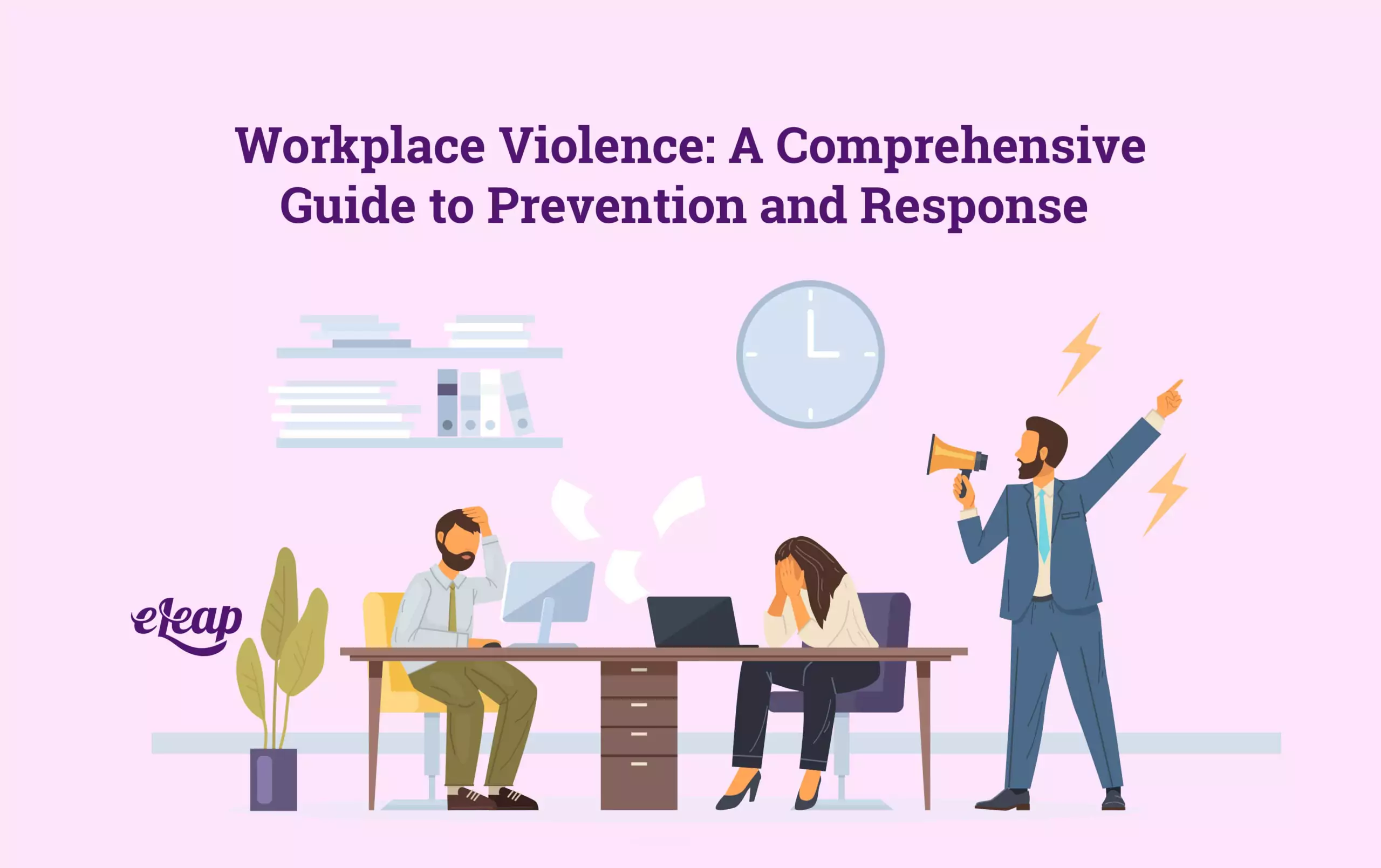Comprehensive Overview to Implementing Reliable Office Violence Prevention Techniques
In today's dynamic workplace, guaranteeing the security and well-being of employees is vital. Office violence continues to be a concerning problem that organizations should proactively attend to. Carrying out effective prevention methods requires a detailed approach that incorporates various aspects of threat evaluation, policy advancement, training, and feedback methods. By comprehending the intricacies of work environment violence and the crucial actions entailed in avoidance, organizations can develop a safe and secure and helpful workplace for their workers - california workplace violence prevention.
Comprehending Work Environment Violence
Office physical violence is a significant issue that encompasses a series of actions and actions that position a hazard to the safety and wellness of workers in a professional setup. It consists of physical violence, dangers, harassment, scare tactics, and various other disruptive or aggressive habits that can take place at the workplace. Recognizing work environment physical violence is essential for organizations to apply effective avoidance methods.
Violence in the office can stem from various sources, including disputes between employees, clients, or exterior individuals - california workplace violence prevention. It can manifest in different kinds, such as spoken misuse, physical altercations, and even much more extreme occurrences like active shooter scenarios. Recognizing the early warning indicators, dealing with underlying causes like stress or organizational culture problems, and establishing clear coverage devices are important action in managing and avoiding work environment physical violence
Risk Assessment and Evaluation

Risk evaluation entails measuring the identified risks based upon their chance and potential impact. This step helps prioritize threats and assign resources extra efficiently towards mitigating one of the most substantial threats. Via an extensive danger evaluation and analysis, organizations can get a much deeper understanding of their vulnerabilities and develop targeted interventions to stop work environment violence. Regular reviews and updates to the danger analysis are essential to adapt to transforming conditions and make certain the recurring performance of avoidance techniques.
Avoidance Policy Development
Because of the insights amassed from the complete threat assessment and evaluation procedure, developing a robust avoidance policy tailored to the organization's certain needs comes to be necessary to minimize work environment physical violence efficiently. Prevention plan development acts as the structure for producing a secure and protected workplace. The policy ought to plainly lay out the organization's stance on office violence, define restricted actions, and develop reporting procedures for potential occurrences.
When crafting the avoidance plan, it is necessary to involve crucial stakeholders, including human resources professionals, safety and security employees, and lawful consultants, to make sure detailed protection of all pertinent facets. The plan should also include training programs to educate staff members on recognizing early caution indicators, de-escalation methods, and reporting procedures. Routine evaluations and updates to the avoidance plan are critical to adapt to transforming threats and business dynamics.
Worker Training and Education
To enhance office security and foster a society of recognition, companies have to focus on comprehensive worker training and education on recognizing, reacting to, and avoiding cases of physical violence in useful link the workplace. Employee training programs ought to cover different subjects such as just how to determine warning signs of possible violence, de-escalation techniques, conflict resolution techniques, reporting procedures, and the company's physical violence prevention plans.
Training sessions ought to be interactive, appealing, and tailored to the particular threats and obstacles encountered by the organization. It is important to offer workers with the knowledge and abilities needed to properly take care of possibly unpredictable scenarios and safeguard themselves and their colleagues. Furthermore, routine refresher programs and updates on the newest ideal practices in physical violence avoidance ought to be incorporated into the training program to make certain that employees are fully equipped to attend to advancing threats.
Occurrence Action and Follow-up
Effective case response and follow-up procedures are essential components of a comprehensive workplace violence avoidance strategy. In case of a terrible occurrence or risk, a well-defined response plan can aid minimize damage and ensure the safety and security of staff members. The first action in occurrence action is to have clear procedures in position for reporting any kind of worrying habits or occurrences (california workplace violence prevention). This consists of establishing a marked point of contact, such as a safety group or HR workers, who can examine the circumstance and launch the suitable action.

Conclusion
